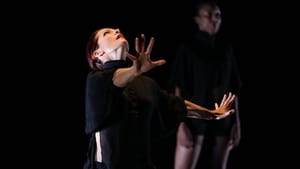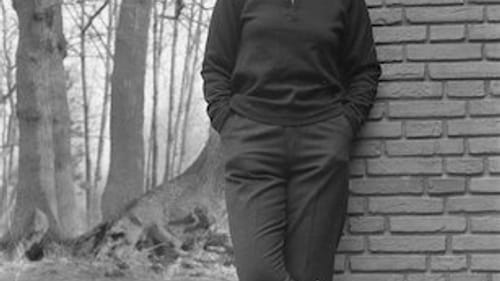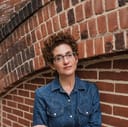Stay in the Loop
BSR publishes on a weekly schedule, with an email newsletter every Wednesday and Thursday morning. There’s no paywall, and subscribing is always free.
Worlds gracefully collide
Philly Fringe 2018: Dancefusion and Sokolow Theatre/Dance Ensemble present 'Moving'

Philadelphia’s Dancefusion and New York’s Sokolow Theatre/Dance Ensemble shared a double bill in Moving, a program dedicated to modern dance. The two companies performed separately and together in six pieces spanning different time periods from the 1930s to the present, as represented in two premieres.
The program notes for one of the evening’s dances suggested an approach for the entire program. They explain that Anna Sokolow (1910-2000) — choreographer, dancer, and rebel of modern dance — based “As I Remember” (1984) on three solos she performed for the Daniel Lewis Dance repertory company between 1936 and 1945. Like memory itself, “As I Remember” does not, and cannot, simply recreate the past.
Instead, the suite of three dances reimagines and riffs on Sokolow's memories. The interplay between time, memory, subjectivity, and tradition are central themes in modern and postmodern (and, indeed, contemporary) dance, art, and literature. As Moving unfolded, I traced this theme through its six dances.
Old meets new
First, Sokolow Theatre/Dance Ensemble performed a dance Sokolow created in 1975. “Moods” felt relevant even as it evoked the ‘70s with choreography that alternately formed organic shapes with dancers’ bodies and broke them apart. For example, I-Nam Jiemvitayanukoon, Boonyarith Pankamdech, and Brock Switzer scuttled like crabs across the stage.
A scene with several dancers spinning away from the group made me think plants of going to seed and nature’s changing rhythms. My favorite part was when a female dancer balanced between the legs of two men, who folded their upper bodies over her like the petals of a flower closing at sunset. The dancers’ costumes — plum-colored tops and leggings — captured a sense of earthiness.
Dancefusion followed with the premiere of “The Space Where You Are,” a duet of love and loss choreographed by Jennifer D. Yackel. Kate Lombardi and Janet Pilla Marini moved between squares of light that suggested the rooms of a house. Sometimes together but mostly apart, Lombardi and Marini expertly captured the competing impulses to cling and let go of a loved one.
First they reached for each other, then they turned away. They conveyed conflicting yet authentic emotion through repeated gestures such as scrubbing their bodies as if to wash away memories and spreading their hands as if opening curtains on a new day.
Next, the premiere of Dancefusion’s “Diaries” continued the program’s exploration of memory and subjectivity. Choreographed by Omar Frederick Pratt, it was interesting and beautiful to watch, but perhaps less effective thematically. “Diaries” contained striking images of a stage strewn with rose petals and the urgent act of recording thoughts and feelings. Dancers mimed scribbling on material and immaterial surfaces, such as the floor and the air.
The piece ended abruptly, and a rough moment came when two dancers nearly collided. But “Diaries” also included stellar dancing, particularly by Pratt, Lamar Rogers, and Zaki Marshall. A section where the three danced together was a highlight full of leaps, complex variations in timing, and lightning-speed turns.
Mixed messages
Program notes provided by choreographer Camille Halsey described “Three Parts Human,” another Dancefusion premiere, as exploring the need to keep going when we are drained of energy and emotion. Incorporating dancers’ breathing and sighing helped the piece capture that sense of persevering through exhaustion.

The female dancers’ costumes, champagne-colored and togalike, were beautiful. But their connection to the dance’s motif was unclear, as was some of the choreography. “Three Parts Human” was a visual treat, but its graceful movements drawing on ballet and modern traditions did not clearly convey triumph over depletion.
“As I Remember,” Sokolow’s decades-later reinterpretation, came next. This three-part piece featured two solos. The first, commandingly performed by Marini, was one of my favorite moments in the program.
“Lament for the Death of a Bullfighter” mixed passion with pain and masculinity with femininity. Marini’s costume, a black top and skirt, suggested mourning. But the skirt was lined with bright red fabric, and as she twirled it I wondered whether she was the matador or his beloved, vanquisher or vanquished.
Camille Halsey brought a carefree spirit to the next solo, “Ballad in a Popular Style,” with lighthearted kicks and heel bounces. Its more athletic movements — jumps and swinging arms — were executed with less confidence, though perhaps this is a fault of the choreography, which veers from graceful to explosive.
Finally, Lombardi, Elisa Shreiber, and Melissa Sobel performed “Kaddish,” a work that takes its name from the Jewish prayer for the dead. The dancers’ black dresses cleverly alluded to that prayer: one sleeve was replaced with a ribbon of fabric that looked like the tefillin some Jews wear when they pray. While “Kaddish” was effectively conceived and performed, I found it the least engaging; to me, all dances of mourning tend to look alike.
Test of time
Moving concluded with Sokolow’s “The Unanswered Question” (1971), performed by members of both Sokolow Theatre/Dance Ensemble and Dancefusion. This piece did not stand the test of time as well as Moods has.
In the early ‘70s, it may have been iconoclastic: dancers fell forward, raising their legs behind them while lying prone onstage. Today, these movements and configurations of bodies felt dated, and the pace was a bit slow. Charles Ives’s music only reinforced this sense with outer-space sounds that recalled 20th-century sci-fi rather than the digital era.
Still, “The Unanswered Question” also contained compelling images, beginning with dancers seeming to grow taller as they rose onto their toes, raising clasped hands overhead, and ending with hands outstretched to the audience.
The program’s inclusion of older works invited consideration of modern dance’s history and legacy, plus valuable perspective on the evening’s premieres. This approach made Moving a buffet of modern dances old and new, serving up ingredients in the style’s evolution.
What, When, Where
Moving. Dancefusion and Sokolow Theatre/Dance Ensemble. September 14-15, 2018, at the Performance Garage, 1515 Brandywine Street, Philadelphia. (215) 828-9933 or fringearts.com.
Sign up for our newsletter
All of the week's new articles, all in one place. Sign up for the free weekly BSR newsletters, and don't miss a conversation.

 Melissa Strong
Melissa Strong